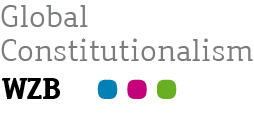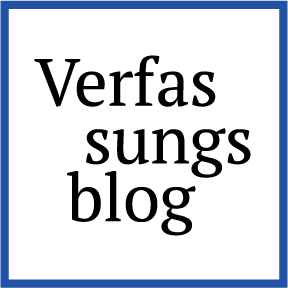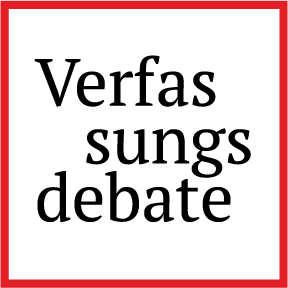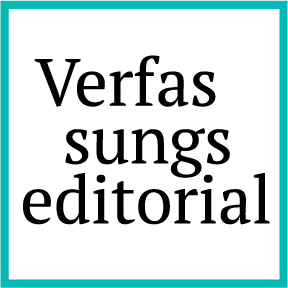The Philippines a Year under Lockdown
Continuing Executive Dominance, Threats to Democracy, and Unclear Pandemic Response
The Philippines have one of the longest lockdowns in the world in response to COVID-19. This post reviews the past year, focusing on the main legal and political issues as well as prospects in the country with the second highest total number of COVID-19 cases in Southeast Asia.
Overview of Legal and Political Response and Adaptation to COVID-19
The first imported case of COVID-19 was detected in the Philippines in late January 2020. Initially, the national administration downplayed the virus and claimed that the country was on top of the situation. However, in early February, the administration relented to pressure from some legislators and interest groups and imposed a travel ban on flights from Wuhan, Macau, and Hong Kong. By February, voluntary repatriation of Filipinos from Wuhan was initiated.
After the first cases of local transmission, President Rodrigo Duterte declared a state of public health emergency in the country on 8 March (Proclamation No. 922) and suspendedschool classes in Metro Manila. This declaration adheres to the 1987 Constitution, particularly the State’s policy to protect and promote the right to health of the people (Article II, Section 15), and the Law on Reporting of Communicable Diseases (Republic Act [RA] No. 11332), which provides that the Philippine President shall declare the state of public health emergency in case there is an epidemic of national and/or international concern that threatens national security and enables the President to mobilize agencies and resources to address the threat.
A partial lockdown of Metro Manila from 15 March to 14 April was announced, together with suspension of travel to and from Manila. On 16 March, the entire Luzon group of islands was placed under enhanced community quarantine (ECQ), effectively a total lockdown and the strictest category of lockdown imposed in the country. In the next few months, the government would impose various types of quarantine and the list of allowed and disallowed activities outside homes evolved based on the changing evaluations of the Inter-Agency Task Force on Emerging Infectious Diseases (IATF).
On 16 March, the President signed Proclamation No. 929 placing the country under a state of calamity due to COVID-19 for six months, again adhering to the Constitution’s Article II, Section 15 and the Philippines Disaster Risk Reduction and Management Act (RA No. 10121). The proclamation allows the national and local governments ample leeway to utilize appropriate funds in their disaster preparedness and response efforts to contain the spread of COVID-19 and continue provision of basic services to their respective populations.
After 15 May, there was a gradual easing of lockdown in certain areas depending on the number of COVID-19 cases, with the main aim of enabling economic recovery. Metro Manila’s ECQ was lifted on 1 June, replaced by general community quarantine (GCQ), which allowed some economic activities to resume and limited public transportation to operate. However, for certain periods in the year in the country, some areas were put under modified ECQ (MECQ) which further limited economic activities due to a spike of cases and the demand of health workers’ associations to allow the health and hospital system to “breathe” and improve as hospitalshad already exceeded the capacity to handle COVID-19 patients. Later in the year, most of the rest of the country was under modified general community quarantine (MGCQ), the loosest quarantine phase that permits many businesses and other activities to open with some limitations.
The initial period of the country’s state of calamity was further extended by Proclamation No. 1021 (dated September 2020) until 12 September 2021. Due to a spike of cases again since January 2021, continued limitations in contract tracing, testing and resources of healh facilities, as well as a delay in the purchase of vaccines, restrictions began to increase again. Metro Manila and neighboring provinces were once again under ECQ from 29 March to 11 April and under ECQ until 30 April.
In legislation, in March 2020, Congress upon request of the President approved the Bayanihan to Heal as One (RA No. 11469) (“Bayanihan Act”). The law gave the President some emergency powers for three months to optimize efforts in the pandemic response as support to the first two presidential proclamations on national health emergency and national calamity. (Bayanihan is a Filipino cultural value used to refer to a spirit of communal unity and cooperation.) The law expired on 25 June 2020 and the Office of the President requested Congress to pass a second Bayanihan law focused on recovery. By September 2020, Bayanihan to Recover as One (RA No. 11494 or Bayanihan 2), which lays out the country’s COVID-19 response and allocates funds to help struggling sectors cope with the pandemic’s impacts, has been approved by Congress and signed by the President. Bayanihan 2 expired in December 2020 but appropriations made under the law are extended up to June 2021.
The Executive and Use of Powers in Response to Emergency
Temporary emergency powers of the President are constitutional when obtained through legislative enactment specifically to allow the executive branch to better address a particular threat facing the Philippines and its people by means of a declaration. During war or other national emergencies, the two Houses of Congress may, by law, “authorize the President, for a limited period and subject to such restrictions as it may prescribe, to exercise powers necessary and proper to carry out a declared national policy.” (Article VI, Section 23)
Emergency powers are granted to the President by Bayanihan 1 and 2 Acts. Other declarations regarding the health emergency and the state of calamity mentioned earlier are based on earlier legislations. These are the first national health emergency powers legislated by Congress for the President to exercise since the ratification of the 1987 Constitution, although this is not the first time that Congress granted special temporary emergency powers to the President and to the executive branch of government under the Constitution to address a crisis.
The declaration of the national health emergency in the laws did not invalidate the Constitution or any of its provisions, particularly the Bill of Rights. However, as we will see in other sections of this post and based on an constitutional performance assessment in the period of a pandemic, despite the constitutional and other legal safeguards in the exercise of emergency powers, there was greater consolidation of powers in the executive branch and a further weakening of the separation of powers. Executive dominance has already been noted in a pre-pandemic performance assessment of the Constitution; the trend has been exacerbated with COVID-19. The executive branch has dominated the pandemic response, for better or for worse, and its implementation has resulted not only in a poorly planned and coordinated response to the pandemic but also in the further weakening of other institutions and democratic institutions, processes, and principles.
The current Cabinet has been disproportionately led by former or retired military and police generals and they largely dictate national responses to the pandemic. Thus, citizens are mostly instructed to “obey” the rules even if some of them are lacking clear guidelines, instead of harnessing cooperation, civil duty, and true bayanihan spirit of cooperating and helping fellow citizens. Civilian health and other experts have difficulties getting their analyses and suggestions to the executive branch. Instead of providing concrete plans and comprehensive reports related to the pandemic response, the President’s weekly public briefings and the daily press briefings of Cabinet members and Department representatives have been used to attack and discredit critics, the opposition, activists, and some media groups and businesses accused of being enemies of the government.
The Effectiveness of Judicial and Legislative Scrutiny and Oversight
While Congress has passed the two Bayanihan Acts swiftly since the President certified them as urgent, the Constitution and the laws oblige the President’s office to make an accounting to Congress of all actions taken throughout the period of national emergency and to submit regular reports to Congress of all acts performed, including the amount and utilization of funds pursuant to addressing the pandemic. Congress, after all, exercises oversight functions over the other branches of government.
Yet, even before the pandemic, both Houses have been dominated by blocs allied with the President. In a country with weak political parties and personality-oriented politics, most traditional legislators/politicians ally themselves with a popular Chief Executive, who appears to enjoy high trust ratings even in surveys conducted during the pandemic. Even during COVID-19, Congress in July 2020 passed the Anti-Terrorism Act which has questionable provisions that limit the role of the Judiciary and the Commission on Human Rights and threaten the rights of people “suspected” of committing “terrorist” acts. Congress has also denied a new franchise to ABS-CBN, the largest broadcast network with the widest reach nation-wide and accused it of having displeased the President, on the basis of certain questionable technicalities in June 2020.
Thus, in this pandemic, there is little information as to the extent Congress has scrutinized the weekly reports submitted by the Office of the President to Congress or how much deliberation has surrounded their submission. Both Houses’ leadership and the Congressional Oversight Committee declared satisfaction with the executive branch’s performance as regards Bayanihan 1, despite opposition legislators’ insistence for more scrutiny, especially regarding how the substantive amount of money involved in the pandemic response was spent.
What has been more obvious since 2020 has been the targeting of investigations into specific Departments. For instance, the two Houses have been conducting continuing hearings related to the Department of Health’s (DOH) readiness and continuing responses to the pandemic, and corruption allegations in the Philippine health insurance system. However, save for a few resignations of some officials in the insurance system, there has not been much impact on the direction of the DOH’s pandemic response.
Lower courts have ruled on issues of alleged violations committed by executive agencies in the enforcement of the national health emergency. Courts, despite their operations being affected by the pandemic, have in several instances pointed out that law enforcers, i.e. the police and local enforcers, have committed errors in their application of policies related not only to the Bayanihan Acts but also to quarantine laws and to related local ordinances, particularly in arresting supposed violators, who are mostly community organizers and poor people trying to continue making a living despite the pandemic.
Since 2016, the Supreme Court and the Judiciary have weakened in terms of independence vis-à-vis the executive and legislative branches, highlighted by the Court’s removal of the Chief Justice appointed by the previous President through an unprecedented quo warranto petition filed by the Solicitor General in 2018. There have also been 61 lawyers, judges, and prosecutors killed in the five years of the Duterte Administration, more than the combined number of those killed from the administrations of Ferdinand Marcos to Benigno Aquino III.
In 2020, the Supreme Court now dominated by Duterte appointees denied a petition seeking to declare the Bayanihan 1 Act unconstitutional on the grounds that it failed to show grave abuse of discretion. However, proof that various groups still see the Supreme Court as the last bastion of democracy and human rights is the number of petitions (37) filed by various groups against the controversial Anti-Terror Law. Oral arguments have begun, amidst observation of strict safety measures and delayed by various forms of lockdown, since February 2021. In an unprecedented move, and giving in to demands for decisive action from lawyers, the Supreme Court en banc has issued a statement in March 2021 condemning the killings of lawyers, judges, and prosecutors, and vowed to look into institutional changes to better protect them.
Regional and Local Governments’ Responses
Since the beginning of COVID-19, there have been a number of local government units (LGUs) led by fast-thinking and innovative mayors, which have been proactive not only in trying to mitigate the spread of the virus in their localities, but in dealing with the dislocation of constituents and other effects of the lockdown. Some of these LGUs had good coordination with national agencies, but some had to work with the private sector and other civil society groups in the absence of clear instructions from the national government, particularly in the beginning of the pandemic. These LGUs and mayors had at their disposal relatively large incomes and resources compared to others, skilled local bureaucracy, good data management and evidence-based decision-making, good partnerships with the private sector and civil society groups, and participatory mechanisms. However, some LGUs failed to meet the challenges of COVID-19 and the responsibilities during the crisis because of limited resources, lack of good management skills, the dominance of patronage politics, corruption, and other problems.
The inequity in capacity and access to resources among LGUs, and how it impacts consistency in effective service delivery, despite significant powers devolved to LGUs since the 1991 Local Government, is further highlighted by the pandemic. Perhaps one potential development of the pandemic is that there might be more roles for regional bodies or groupings of LGUs, beyond development planning but in localizing many plans and developing appropriate services for their constituents, in the future. Regional Inter-Agency Task Forces were also eventually created to be the IATF’s local counterparts, though they are supervised by a Cabinet member assigned to the region by the President. The newly reconstituted autonomous Bangsamoro Autonomous Region in Muslim Mindanao, the only autonomous region with a regional government created as a result of a peace agreement between the Philippine government and Muslim rebels in the pursuit of lasting peace and development in the region, has also been working on the additional challenges posed by COVID-19 in trying to combat the spread of the virus in a poor area where peace is fragile.
Human Rights and Civil Liberties Considerations
The pandemic response of the national government has definitely curtailed a number of civil, political, social and economic rights. Generally, most people obey the lockdown rules for fear of getting COVID-19. However, many of them, particularly poor people and those who do not have secure employment would have wanted better support for the loss of livelihood as well as equal access to health and other services. But the poorly planned and uncoordinated response of the government has left a large number of people uninformed, stranded, jobless, and without access to proper health services and social welfare. Some of them have to beg on the streets and try to earn income despite the lockdown. Even returning overseas Filipino workers, who contribute to the economy from their remittances, who lost their jobs abroad face plenty of challenges. In the middle of 2020, the country experienced it first recession in 29 years, with unemployment rate in January 2021 at 8.7%.
What is worrying is the very strong, punitive but unequal response to citizens accused of violating curfew and lockdown policies by implementers (mostly police and local enforcers). Illegal arrests and detention are cases in point. There are reports of curfew violators placed in dog cages, and some even being killed. Even students and volunteers providing feeding programs and Labor Day protestors were subjected to so-called “red-tagging” and arrested even if most protests by civil society follow physical distancing protocols. However, inequality in treatment is clearly shown as most of those arrested or punished for violations are poor people while influencers, government officials, and rich people who are also violators are treated humanely and accorded with courtesies by implementors.
Together with these violations of people’s rights during the pandemic, extrajudicial killing of suspected drug users and pushers and “red”-tagging of critics and those labelled as opposition, even if they are university students and professors, entertainers, legitimate civil society groups, farmers, indigenous peoples, and professionals continues.
The above observations are complemented by global indices. The V-Dem Pandemic Democratic Violations Index mentioned the Philippines as one of seven countries with a high risk of pandemic backsliding. The International IDEA’s COVID-19 Monitor, meanwhile, pointed out three worrying areas of freedom of expression, media integrity, and predictable enforcement.
2021 Outlook: Recommendations for Governance, Democracy, Human Rights, and the Rule of Law
Urgent issues that need to be addressed include the need to add more active pressure on the executive branch to be accountable for its actions as regards the pandemic and other issues, more legislators that will use and strengthen Congress’ exercise of its legislative and oversight functions, a more independent Judiciary that would fairly scrutinize all issues brought to it, more civilian oversight over the military and the police, stronger political parties and reforms in the electoral system to increase representation, protecting independent accountability institutions, upholding the rights of citizens and groups, promoting accurate public information and education, and strengthening the spirit of community and active citizenship that has been on display more prominently since the pandemic.
Finally, the pandemic is a game changer in the immediate future of the Philippines. Responses to it will be a major issue to check on the administration’s accountability. The 2022 national and local elections, which are already in the minds of both voters and politicians, will add to the complexities of decision-making and actions of many actors, including the responses to the pandemic this year. COVID-19 will be an election issue, whether candidates and parties like it or not. There are already indications that some citizens and groups are mobilizing to push for more appropriate responses to the pandemic as well as more progressive multisectoral groupings in preparation for the elections next year. We will see how these will be successful given the threats to democracy and the rule of law that have been present even before but have intensified during the pandemic.
*Note: Some sections are updated sections from the author’s paper for the Melbourne Forum 2020’s Webinar 1: Emergency Powers and COVID-19, held last September 2020 and from the report she co-authored entitled Constitutional Performance Assessment in the time of a Pandemic: The 1987 Constitution and the Philippines’ COVID-19 Response (2020).




Perhaps I’ve misunderstood Article II Section 15 and the Bayanihan acts.
First, Article II Section 15 provides the “State shall protect and promote the right to health of the people and instill health consciousness among them”. If this law refers to “protecting people’s health” then why insert the word “right” in there? I think it was meant to protect our ”right” to access healthcare. If so, then government has been using this law in error and all protocols based on this collapses.
Next, the first Bayanihan Act by Congress clearly provides nothing “herein shall be construed as an impairment, restriction or modification of the provisions of the constitution …” and the act is “subject to the Bill of Rights and other constitutional guarantees”.
Since quarantines are the opposite of liberty, then we must go to the constitution. The Bill of Rights in the Constitution provides no “person shall be deprived of life, liberty, or property without due process of law, nor shall any person be denied the equal protection of the laws.” According to “batasnatin” without a trial there are two minimum requirements for “due process” and they are notice and hearing. Based on these, it cannot be possible to order quarantines because it’s unconstitutional (illegal).
Further the “right of the people to be secure in their persons … against unreasonable searches…”. Without a warrant, how can government order contact tracing, Covid tests and temperature checks, etc? “The State shall give priority to education, science and technology, arts, culture, and sports to foster patriotism and nationalism, accelerate social progress, and promote total human liberation and development.” If the priority is education, how can schools be ordered closed? “The State affirms labor as a primary social economic force. It shall protect the rights of workers and promote their welfare.” If the state is to protect the welfare of workers, how can it order businesses closed? “The separation of Church and State shall be inviolable.” If so, how can the state order Covid management protocols in churches?
On the points raised on the constitutionality of the COVID-19 response particularly on the restrictions imposed, by the police power of the State, the government can impose laws that may infringe on liberty and property of people in order to promote public policy, public welfare, order and peace. Therefore, the imposition of lockdowns during the pandemic, by the police power of the State, is a valid exercise of government power because it is for the purpose of promoting public health and welfare during the pandemic. Although exercise of police power should not be oppressive and discriminatory, or should be within the limits of the Constitution (Bill of Rights especially), it is unfortunately evident that the current administration failed to protect the rights of the people and to uphold the Constitution.
Wonderful article. Fascinating to read. I love to read such an excellent article. Thanks! It has made my task more and extra easy. Keep rocking.
Great post! The insights shared are spot-on and really got me thinking. Thanks for sharing!
Chika Minute